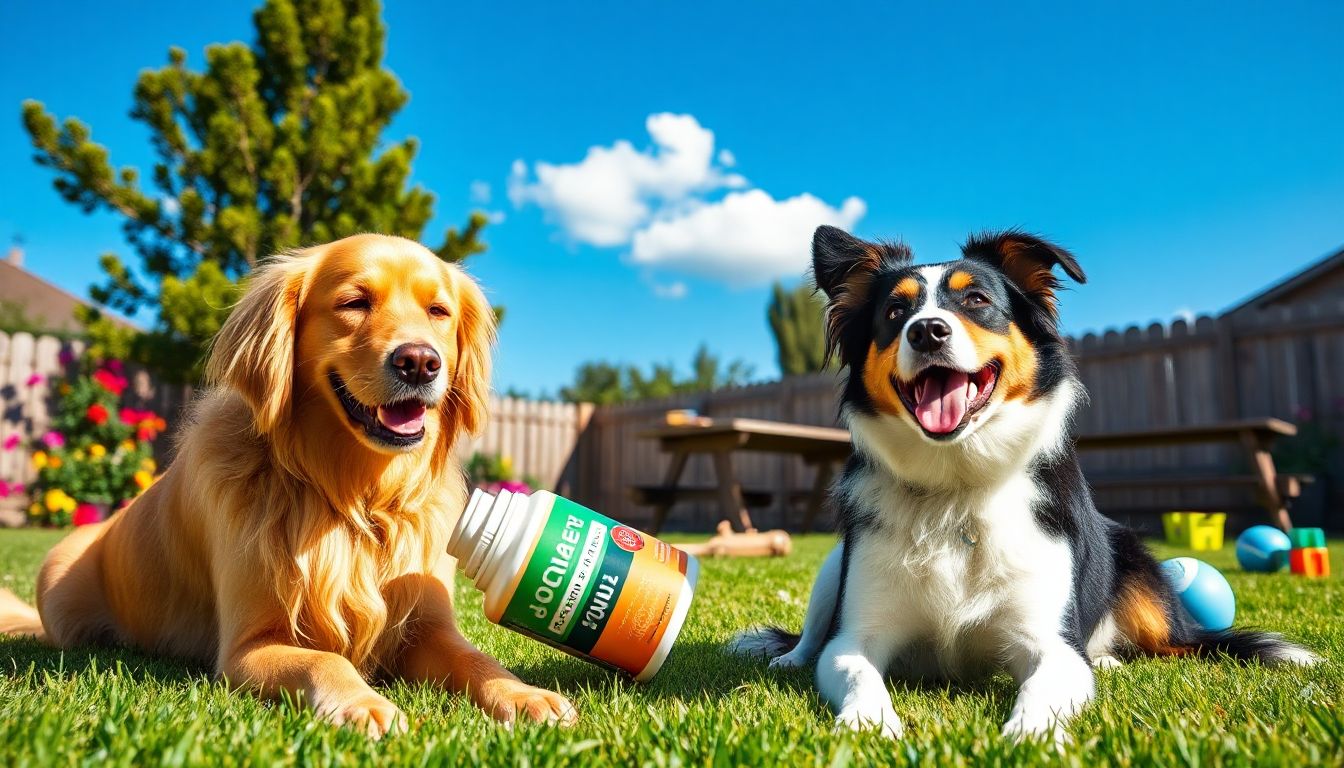
Introduction
A dog’s mobility is vital for their happiness and well-being. As dogs age or certain breeds are more prone, joint problems become common. Conditions like arthritis can make even simple walks painful. Starting early with joint supplements can help maintain healthy cartilage and ease discomfort. This guide will walk you through the types of supplements, key ingredients, how to pick the right one, and expert tips to keep your dog active and pain-free.
Understanding Canine Joint Health
The Anatomy of a Dog’s Joints
A dog’s joints act like hinges that connect bones, helping them move smoothly. Cartilage cushions bones, while synovial fluid lubricates joints. When these parts work well, your dog can run, play, and jump with ease. Over time, aging, genetics, and activity levels can wear down these structures.
Common Joint Problems in Dogs
Osteoarthritis is the most common issue, especially in older dogs or large breeds. Hip dysplasia and elbow dysplasia are genetic problems causing joint instability. Signs include limping, stiffness, or reluctance to play. Watch for decreased activity, joint swelling, or yowling when touched.
Statistics and Impact
Nearly 1 in 5 dogs show signs of joint issues at some point. Large breeds like labs or retrievers are more vulnerable. With joint pain, dogs may move less, affecting their lifespan and happiness.
Types of Joint Supplements for Dogs
Most Popular Supplement Forms
Dog joint supplements come in various forms:
- Chewables: Easy to give and often tasty.
- Powders: Mix into food; good for picky eaters.
- Liquids: Fast absorption but less common.
- Capsules: Suitable for dogs who swallow pills easily.
Each has its perks — chewables are convenient, while powders can be targeted in dosage.
Key Ingredients to Look For
Glucosamine and Chondroitin
These ingredients are stars in joint health. Glucosamine helps rebuild cartilage, while chondroitin prevents breakdown and adds lubrication.
Omega-3 Fatty Acids
Found in fish oil, omega-3s act like natural anti-inflammatories, reducing swelling and pain.
Other Beneficial Ingredients
- MSM: Supports joint repair.
- Hyaluronic Acid: Improves joint cushioning.
- Turmeric: Naturally reduces inflammation.
- Avocado/Soybean Unsaponifiables (ASUs): Support cartilage health.
Vet-Recommended Supplement Brands
Look for trusted brands like Cosequin, Dasuquin, and Nutramax. Many vets endorse these based on research and customer feedback.
How to Choose the Right Joint Supplement for Your Dog
Assessing Your Dog’s Specific Needs
Consider their age, breed, activity level, and existing joint issues. Younger dogs need maintenance, while older or disabled pups may require more potent formulas.
Reading Labels and Ingredient Lists
High-quality products clearly list active ingredients. Avoid fillers and artificial additives. Look for formulas containing effective amounts of glucosamine and chondroitin.
Consulting the Veterinarian
Always check with your vet before starting any supplement. They can recommend doses or supplements suited to your dog’s unique health.
Safety and Dosage Considerations
Follow dosing instructions carefully. Watch for side effects like upset stomach or allergies. If a supplement causes issues, stop and consult your vet.
Cost and Accessibility
Good supplements vary in price. Find a product that fits your budget but doesn’t cut corners on quality. Many brands are available online and at pet stores.
Effectiveness and Evidence-Based Benefits
Scientific Research on Common Ingredients
Studies show glucosamine and chondroitin can improve mobility and reduce pain in dogs with arthritis. Omega-3s also help lessen joint inflammation and swelling.
Real-World Examples
Many dog owners notice quick improvements—less stiffness and more playtime. Dogs on supplements often walk better and seem happier.
Monitoring and Adjusting Supplementation
Track your dog’s activity and comfort levels. If no improvement after a few weeks, revisit your veterinarian for adjustments or alternative options.
Additional Strategies to Support Canine Joint Health
Proper Exercise and Weight Management
Regular low-impact activity keeps joints flexible but avoid overdoing it. Maintaining a healthy weight reduces strain, preventing further damage.
Physical Therapy and Alternative Treatments
Options like hydrotherapy or massages can boost joint health. Acupuncture may also ease chronic pain in some cases.
Regular Veterinary Check-Ups
Ongoing vet visits help spot joint issues early and keep your dog on a healthy path.
Conclusion
Keeping your dog active and pain-free starts with informed choices. Prioritize high-quality joint supplements with proven ingredients. Combine supplements with proper exercise, weight control, and regular vet care. Early intervention makes a big difference. Consult your vet to develop a tailored plan that keeps your furry friend moving happily for years to come.

